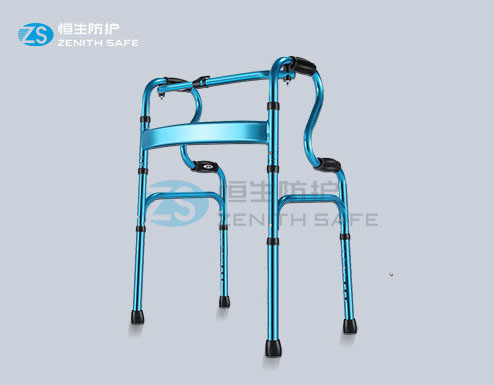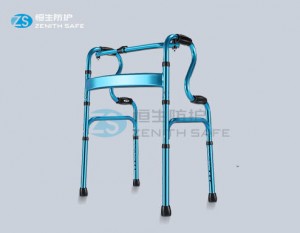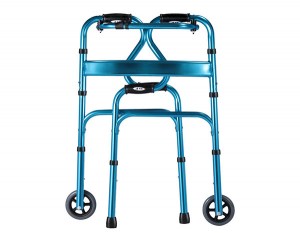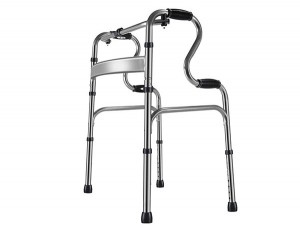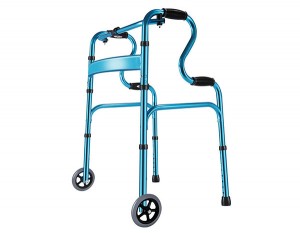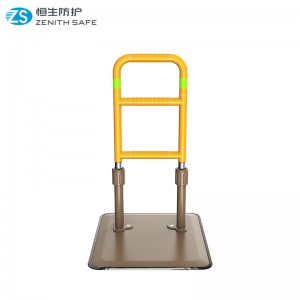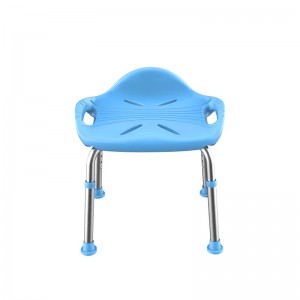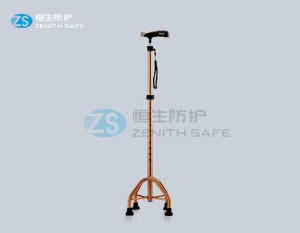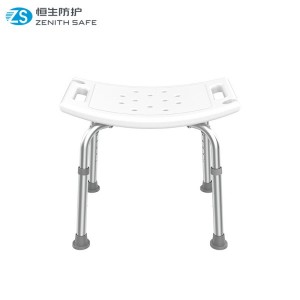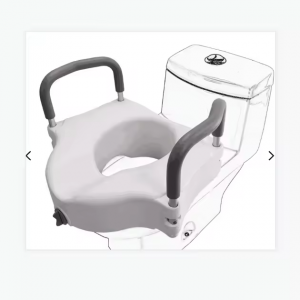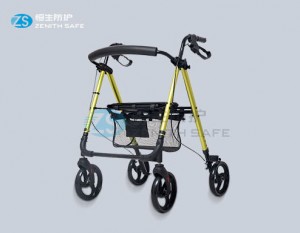How to use a walker
The following is an example of paraplegia and hemiplegia to introduce the use of the stick. Paraplegic patients often need to use two axillary crutches to walk, and hemiplegic patients generally only use delay canes. The two methods of use are different.
(1) Walking with axillary crutches for paraplegic patients: According to the different order of axillary stick and foot movement, it can be divided into the following forms:
① Alternately mopping the floor: The method is to extend the left axillary crutch, then extend the right axillary crutch, and then drag both feet forward at the same time to reach the vicinity of the axillary cane.
②Walking by mopping the floor at the same time: also known as swing-to-step, that is, stretch out two crutches at the same time, and then drag both feet forward at the same time, reaching the vicinity of the armpit cane.
③ Four-point walking: The method is to first extend the left axillary crutch, then step out the right foot, then extend the right axillary crutch, and finally step out the right foot.
④Three-point walking: The method is to first extend the foot with weak muscle strength and the axillary rods on both sides at the same time, and then extend the opposite foot (the side with better muscle strength).
⑤Two-point walking: The method is to extend one side of the axillary crutch and the opposite foot at the same time, and then extend the remaining axillary crutches and feet.
⑥ Swing over walking: The method is similar to the swing to step, but the feet do not drag the ground, but swing forward in the air, so the stride is large and the speed is fast, and the patient's trunk and upper limbs must be well controlled, otherwise it is easy to fall .
(2) Walking with a cane for hemiplegic patients:
①Three-point walk: The walking sequence of most hemiplegic patients is to extend the cane, then the affected foot, and then the healthy foot. A few patients walk with the cane, the healthy foot, and then the affected foot. .
②Two-point walk: that is, stretch out the cane and the affected foot at the same time, and then take the healthy foot. This method has a fast walking speed and is suitable for patients with mild hemiplegia and good balance function.

Message
Products Recommended
-

Phone
-

E-mail
-

Whatsapp
-

WeChat
Judy

-

Top






